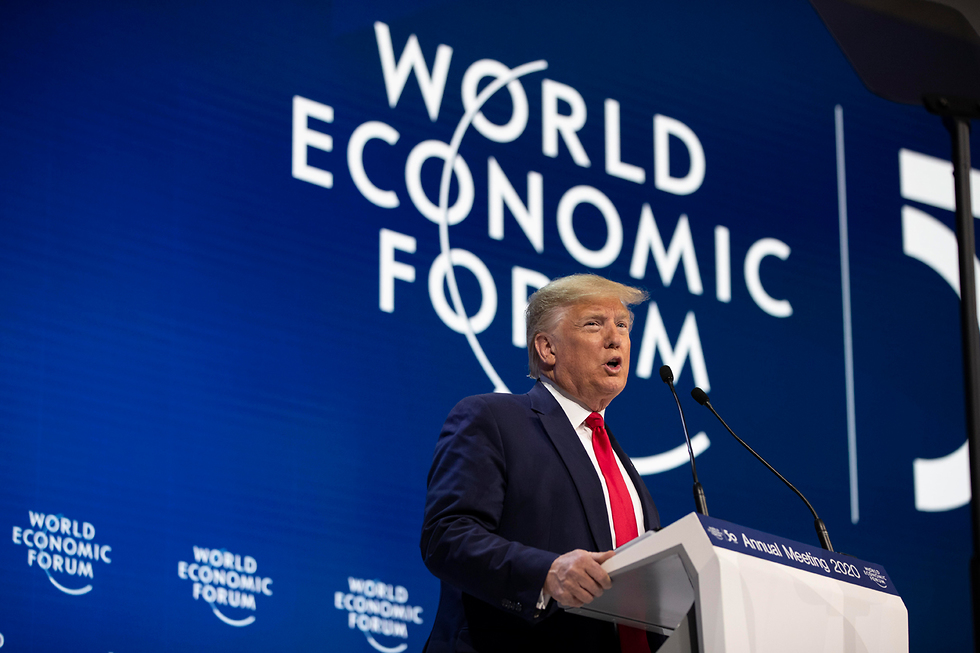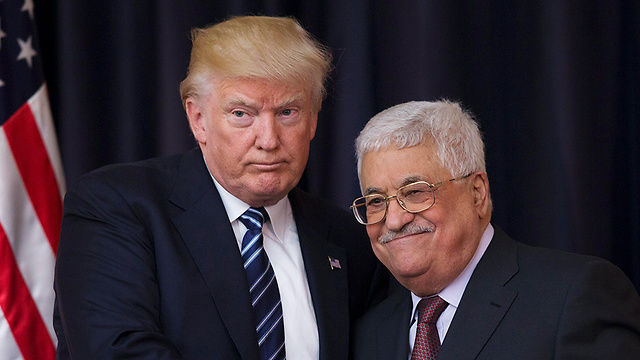Getting your Trinity Audio player ready...
As both Prime Minister Benjamin Netanyahu and Blue & White Chairman Benny Gantz prepare to travel to Washington to discuss U.S. President Donald Trump's peace proposal, more details emerge that shed light on the so-called deal of the century.
Apparently, the Trump administration understands the difficulty in implementing the proposal, which establishes a four-year transition period during which the Palestinians would have a chance to retract their formal refusal (after Palestinian President Mahmoud Abbas vacates his position).
Sources also say that the Americans will not accept partial Israeli compliance and execution of the plan's provisions.
They won't accept a "yes, but" from Netanyahu. The prime minister intends to accept the plan but would also like to discuss some reservations that Israel might have about the deal.
The peace plan states that during the four-year transition period, the status of all territories under the Israeli-ruled Area C will remain unchanged.
This means that Israel will be able to build in areas where settlements already exist but will not be able to expand beyond its current borders. It will also ban the approval of new urban development plans for the expansion of industrial areas in the West Bank, a condition to which settlers strongly oppose.
The plan allegedly allows Israel to annex 30% to 40% of Area C, while the Palestinians will have control over about 40% of Areas A and B. This leaves the status of the remaining 30% of Area C unclear.
Settlers argue the Americans allowed Jordan and the Palestinians to think that these same leftover 30% will later be added to the 40% that the Palestinians already have, so the Palestinian state will cover some 70% of the West Bank.
According to Israeli sources, the Americans want to wait a few weeks for the Palestinians to decide whether they accept or reject the deal before Israel starts applying sovereignty on its territories within Area C.
However, Israel wouldn't be able to touch any of the territories designated for the potential Palestinian state in case the Palestinians would want to resume negotiation talks in the coming years.
At the end of the transition period, the Palestinians will be able to declare an independent state, but with limited powers. It will be completely demilitarized, it will have no control over its aerial space or border crossings and will not be allowed to form alliances with other countries.
The plan suggests the construction of a tunnel connecting the West Bank and the Gaza Strip and will serve as a safe passage for Palestinians.
This is a very sensitive issue that has not yet been examined by Israeli security authorities, which will certainly have their reservations to ensure that the tunnel will not be used to transfer weapons or individuals wanted for crimes against Israel.
The plan demands the Palestinian Authority will regain full control over the Hamas-ruled Gaza Strip and demilitarize the militant factions in it.
Israeli officials see this demand as proof that the Americans either don't understand the existing situation correctly or that they simply don't mean it seriously.
The deal leaves 15 settlements in small, isolated enclaves of Israeli sovereignty and settlers fear that they will have to evacuate their homes at some point.
Israel will also be required to withdraw out of 60 illegal outposts that house some 3,000 settlers.
This is a section that the settlers will struggle with and also contradicts Netanyahu's past promises to the settlers to annex all settlements.
Jerusalem will remain entirely under Israeli sovereignty, including the Temple Mount and other holy places that will be under the joint supervision of both Israel and the Palestinians.
Everything beyond the separation fence in Jerusalem will be transferred to the Palestinians, provided they accept the plan's full outline.
The Palestinians wouldn't be able to annex territories unilaterally like Israel in Area C territories.
The Palestinians will be able to set their capital anywhere they want in Jerusalem, provided it is beyond the separation fence. This means the Palestinians can continue to set their capital in the Arab neighborhood of Shuafat in Jerusalem.
The economic part
The program also offers $50 billion in funding for projects in territories designated for the Palestinian state.
Sources close to the White House claim that Saudi Crown Prince Mohammad bin Salman and the other princes of the Persian Gulf countries have promised the Americans to donate the money in an effort to prevent the Palestinians from sabotaging the plan from behind the scenes.
The Palestinians threaten to stop security coordination if Israel applies sovereignty over all of its settlements.
Jordan's King Abdullah II said last week in an interview that when examining the so-called Deal of the Century, one should look at the glass half full.
Some in Israel interpret this as tacit consent from the king to annex the Jordan Valley by Israel or, at the very least, it is indicative of full coordination between Jordan and the White House, despite threats made by different factions in Israel warning that Jordan may walk back on the peace agreement between the two countries if Israel were to annex the Jordan Valley.



